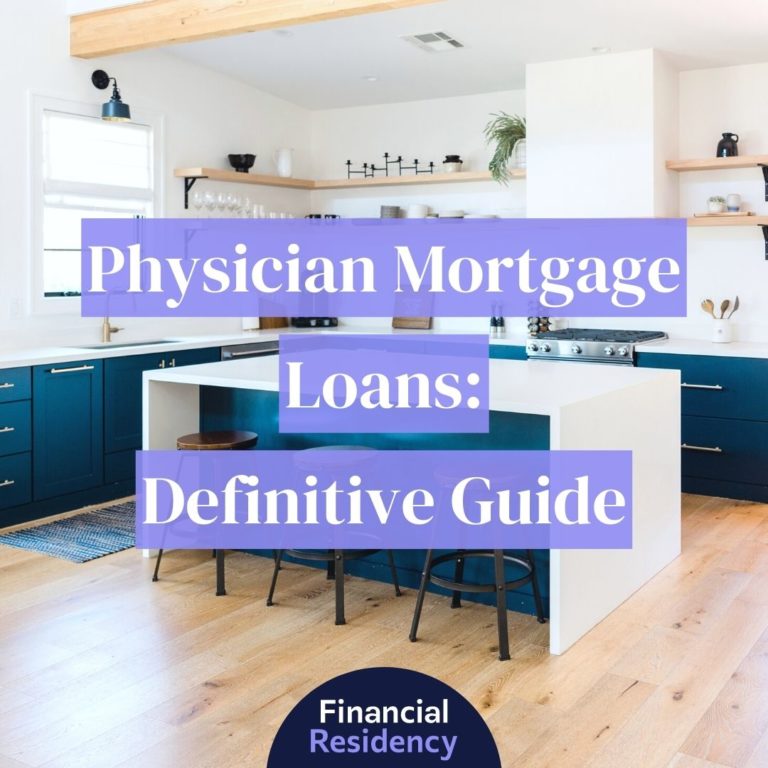Whenever I meet with a client for the first time to create their financial plan, the topic of buying a car always comes up. My clients usually want to know the right way to buy a car so they feel like they’re getting a great value for their money while purchasing something they really want.
Plus, since I work with physician families, many of them want to know if they can buy a new car, how much they should spend, and how they should go about getting the best deal with the limited amount of time that they have.
Many of my clients drove old or run down cars throughout their training and want to upgrade their vehicles now that they’re fully fledged physicians with real physician incomes.
So, because this is such a common question, I thought it would be best to break down my method for buying a car.
4 Steps to Buying a Car the Right Way
After using this method to buy my own vehicle, I’m confident it’s the right way to buy a car to ensure you get the best value without sacrificing your precious time.
Step 1: Determine Your Budget
This step probably isn’t that surprising, but it’s important to know what you can afford to spend. I recommend my clients pay cash for their cars if at all possible unless for some particular reason there’s an extra incentive if you finance it at an extremely low rate.
For example, a dealership might give you an extra $1,000 off of the purchase price if you finance it through them. This is definitely on a case by case basis, but more often than not, I recommend my clients pay cash.
Step 2: Know Your Priorities
Everyone has a different reason for buying a car. For example, when I bought my Tundra, I purchased it specifically because my wife was pregnant with our first child. As a new dad, I wanted a large, safe vehicle, and it was worth every penny.
Other people might value gas mileage if they have long commutes. Or, perhaps they just want something affordable that has four wheels and gets them from point A to point B.
Regardless of what your priorities are, it’s important to have them because this will help you when it comes to Step 3 below.
Step 3: Decide on Used or New
You’ll notice I don’t mention leasing a car in this post. Leases are really only useful if you are paid as a 1099 employee because you get some write offs. However, I recommend buying a car over leasing almost 100% of the time.
With that said, I also prefer to buy new cars. I know this is controversial advice in the personal finance space, but let me explain.
When I bought my truck, my priority was to get a big, reliable, and safe car at a price I could afford. I had a budget set ahead of time that I was willing to spend. I was able to afford a new truck because I chose one with fewer extras. I got the exterior and interior colors I wanted, but it was not fully loaded, because again, my priority was safety not frills.
This is why knowing your priorities (Step 2) is so important, because your priorities will affect whether or not you buy new or used. Had I wanted a fully loaded truck with all of the high end features and upgrades, my only option would have been a used truck because I didn’t want to go over my budget.
My priority, though, was to get a new vehicle with the most up to date safety features for my newborn son. I also wanted a vehicle I could drive for 7-10 years past 100,000 miles. I could have spent less to get a used car, but would it have been as reliable? Would it have lasted as long? Maybe. Maybe not.
Some might argue I could have spent $10,000 less to get a used truck and invested that difference. However, given that I’d already maxed out my retirement contributions that year, I was happy to spend my hard earned money buying my truck in cash. To me, it was an investment in my family’s safety and future, something I consider absolutely priceless.
Remember, this is why personal finance is personal. Once you really sit down and decide what your priorities are, this will help inform your buying decisions. This brings me to the step in the car buying process, which is to research, research, research.
Step 4: Do Your Research
My clients are physicians and so they don’t want to spend an entire Saturday test driving cars, negotiating, and dealing with salesmen at the car dealership. That’s why I recommend a little something I call negotiating from the couch.
Once you determine your budget (Step 1), your priorities (Step 2) the type of car you want (Step 3), and hopefully the exact make a model you want, you can now start your research.
E-mail or call every car dealership within 100 miles of where you live and tell them the vehicle you want. Ask them to give you their best price. Give them some time to talk to their supervisors and keep a detailed spreadsheet. When they start calling you back, start writing their offers down in your spreadsheet. Eventually, the dealerships with the best prices will emerge and you can start to pit them against each other. Remember, they all want the sale. It’s just a matter of how low they’re willing to go on the price.
It’s best to spend some time on this and not to rush the process. The best time to buy, especially when dealing with larger car dealerships, is at the end of the quarter. These dealerships have quotas they need to make each quarter, and if you have some flexibility with the type of car you want, you’re even more likely to get a great deal.
In your calls and when talking to salesmen, try to find out which vehicles on their lots really need to go (you know the ones that have been sitting there for too long.) Eventually, you’ll find the sweet spot when it comes to getting the car you want at a price you’re comfortable paying – and you can do all of that right from your couch.
When I bought my truck, I did all of my negotiating from my couch so that when it came time to go and buy it, I spent an hour at the dealership signing the paperwork and getting the keys. Pretty great, right?
In Conclusion
Ultimately, what I want to convey is buying a car doesn’t have to be a painful process. It can actually be quite fun once you do your research and find the vehicle you want. I can’t emphasize enough that you need to stay within your budget. Remember, if you can’t afford to pay cash for it, then you can’t afford to buy it.
To best prepare for this, start a savings bucket for your next car today. Open up a separate savings account, preferably a high yield account, and automatically transfer money to it with each paycheck so you can buy the car you want in the future.




